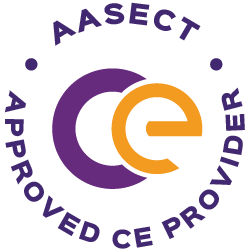Love is not formulaic, and love has never fit well into a box.
While most humans can acknowledge the wild, painful, playful, passionate, and diverse stages of love, many are stagnant in accepting the various ways in which love can be expressed.
Every movie, book, or media story is riddled with messages showcasing that love is romantic, heterosexual, and…monogamous.
No relationship style is better or worse, but what is common may not necessarily be what is healthy for everyone.
Ethical Non-Monogamy (ENM) is the practice of being romantically and/or sexually involved with multiple people who are all aware of each other and consent to the relationship. ENM is an umbrella term that could include everything from poly pods, throuples, and open relationships, to swingers, relationship anarchy, or even “friends with benefits.”
How do you coach a curious client interested in ethical non-monogamy?
Like anything in sex coaching, meet clients where they are.
Bust the myths about Ethical Non-Monogamy
Many clients see a sex coach because they want permission, and the same holds true with GSRD (Gender, Sexual, and Romantic Diversity) clients. A client may express that they have always felt capable of loving more than one person, or they knew in their heart something was different about the way they love, but they couldn’t quite understand it. You may be the first person to hear about someone’s confusion, curiosity, or confession around relationship styles.
As sexuality professionals, we have a duty to hold space for these delicate, vulnerable moments with tact, mindfulness, and unbiased, supportive information. You may have clients who carry a weight of shame from past infidelity, who seek an honest transition into a lifestyle that aligns with their capacity to maintain multiple partnerships. You may see a monogamous couple who cares deeply and lovingly for one another, but they crave the energy of new lovers, and they feel lost on how to explore together. It takes a bold spirit to live in a way that might feel “different” from the majority.
A lot of your work as a sex coach could remain in this stage: guiding clients to understand what they want, and empowering them to develop the courage to pursue it.
Outlining our mono-normative landscape to clients can be freeing in and of itself. Once there is an understanding that most societies highlight lifelong monogamy as the valued, “socially correct” relationship style, then clients are often able to de-pathologize and de-personalize their experience of feeling different or “broken” for wanting to explore ENM.
If we grew up in a world where we regularly saw parents in open relationships, throuples raising a family, and monogamous couples struggling to gain marriage rights or obtain health insurance, then we may think differently about monogamy. Gently pointing to infidelity and divorce statistics in an informative, nonjudgmental way helps clients recognize that the relationship style we idolize is not necessarily successful for everyone, depending on how success is measured.
Relationships embody many different forms, and sometimes clients simply need the green light to forge ahead.
An important note: It’s not a good idea to guide a client into opening a relationship as a means to save the relationship. ENM can’t fix a broken relationship and can in fact make things worse, leading to a lot of pain.
However, it’s also important to remember that ethical non-monogamy still faces a lot of stigma, and one entire session may be spent planning ways to disclose a client’s chosen relationship style to friends, family, or even healthcare providers.
Create a relationship agreement, then run a tech rehearsal
Trying something does not mean committing to it for life, and the beauty of any relationship agreement is that it can be re-visited and re-vamped at any point.
The relationship agreement is where consent, boundaries, and guidelines are defined. This is where you may coach clients through the basics: what do your clients hope to gain from ENM? What defines betrayal—is it a specific act? A lack of disclosure? How will they manage jealousy or time needs and restrictions? What about sexual health and STI screening?
While the thrill of new erotic energy and connections is enticing, clients will likely experience budding emotions they didn’t plan for, which could be positive, negative, or neutral. This is where the intensive coaching stage of the PLISSIC model comes in.
Containing these initial ENM experiences is key to developing a healthy foundation. This phase is similar to a tech rehearsal for a dance performance. Once you know how slippery the stage is, and how to keep your costume in a comfortable spot, you can shine in your show and handle the unexpected, because you have developed the skills and groundwork to get through it.
A rehearsal could mean role-playing the beginning, middle, and ending of one partner going out on a date while the other partner stays home. A client’s rehearsal could also mean going on a simple coffee date without any physical intimacy. It could mean dirty talking with other couples at a sex party. It could mean creating a dating profile. The point of the tech rehearsal is to manage a new circumstance in a low stakes setting.
In her Sex Coach U Presents webinar called “Applying Consent in BDSM and Beyond,” Dr. Celina Criss explains that in a BDSM scene, participants consent to the activity, not to the outcome. In other words, while you can plan activities all day long, emotional states cannot be predicted or guaranteed.
I find the same is true when a client first explores the uncharted landscapes of ethical non-monogamy. They may expect to feel anxiety or jealousy, and instead feel a sense of coming home, and maybe even compersion (that sense of joy that comes from witnessing your partner’s happiness with another partner). They may feel the complete opposite.
Remind clients that a) they are consenting to a relationship agreement, not necessarily the outcomes, and b) agreements are malleable, and there’s always room to reset. This can help clients approach setbacks from a grounded place.
And of course, never skip tech rehearsal.
Coach clients to stay deeply in tune with their somatic “yes” and “no.”
When intimacy involves multiple people, there’s more energy, and that energy holds tremendous power. In coaching, we encourage clients to get in touch with the part of the body that guides them into decisions that are most aligned with their highest good. Dr. Patti Britton refers to this as the body’s truth meter, and she often describes how it can be felt in the gut, heart, or even the third eye.
Coaching clients through ENM may seem overwhelming. What if we miss something that could have prevented our clients from a tough experience?
Here is the secret. Your client’s external emotions are glimpses into their internal worlds. Getting clients in touch with their truth meters helps them remember that emotions are ultimately just sensations felt in the body. When they carefully listen to these sensations, rather than critically analyze emotions for meaning, then the boundaries and agreements become easier to create, because they are simplified into a somatic “yes” or “no.”
Ensuring that clients are deeply in sync with these sensations will be your anchor for guiding them into relationship styles and preferences that are most in line with their core values and higher selves. As sex coaches, we sometimes see a client who appears suffocated or trapped by her monogamous relationship, but she may lack the courage or permission to pursue an alternative. Other times, we may see a client overflowing with resentment and shame, because he has agreed to an ENM relationship when his authentic self doesn’t feel good in it.
Somatic understanding can be key in coaching ENM relationships, because it helps simplify.
Where does your client feel the “yes” or “no” reaction in their body?
How does their body feel if someone they love is kissing someone else?
How does their body feel if they reserve a specific kink, sexual act, or date spot for a certain partner?
How does their body feel if they can finally pursue that distant friend they’ve been fantasizing about for three years?
When a client asks, “How do I know [monogamy / ethical non-monogamy] is for me?”
Simply put, the right relationship feels good for their nervous system.
Getting in sync with the body’s truth meter is essential for making any healthy decision. However, in ENM relationships, understanding your body’s truth meter becomes a centerpiece, because more humans, emotions, and energy are poured into the mix.
Stay Curious About Ethical Non-Monogamy
Being a sex coach means doing our part to understand the evolving, dynamic ways that people live, love, and express themselves intimately.
Relationships are mirrors for learning about the self. In an ENM dynamic, many mirrors are held up from unique angles, showing you who you are in multiple lights and from different perspectives. Because of this, many in the polyamorous community believe ENM serves as a portal for self-awareness, growth, overcoming jealousy, healing from attachment struggles, and even attaining a sense of spiritual enlightenment.
There is no shortcut to navigating the nuances of coaching ethically non-monogamous clients, and it is up to you as the coach to absorb as much as you can to serve clients effectively.
How do you coach ENM-curious clients?
Stay curious yourself.
Curious about training to become a Certified Sex Coach™? Join the next live Info Session to meet the SCU team and participate in a live Q&A!








I appreciate this article for what it is trying to convey, I find it to be a little insulting to use certain terminology used within this article, specifically the term “Ethical” in Non-Monogamy. As someone who has been polyamorous and non-monogamous for over 20 years, the usage of such a term leaves room to convey that people who are non-monogamous are okay and willing to accept unethical non-monogamy; it begs the question of what is and isn’t ethical in non-monogamy. It presents a supposition of what is ethical, without clearly defining what it means to be ethically non-monogamous.
I am completely open to continuing the discussion of this article, I want to make sure that all are represented in ways that make all feel seen and heard. I would also love to see resources on where such information had been gathered and obtained.
Hi Kit! Thank you for bringing up this nuance. I really appreciate this, because I feel language is important, and I want readers to feel seen, included, and heard.
In total honesty…I agree! I find the terms consensual non-monogamy (CNM) and ethical non-monogamy (ENM) really clunky and, in a way, mono-normative in themselves, because we don’t inherently insert “consensual” or “ethical” in front of monogamy. In one of my other articles, https://medium.com/sex-coach-u-magazine/ethical-non-monogamy-lessons-from-modern-love-faa75bf7d0a0 , I touched on this irony.
Inserting “ethical” or “consensual” in front of non-monogamy and polyamory is popular in a lot of spaces, at least with what I have been part of. On dating apps, people often say, for example, “I am ENM with a nesting partner.” Many clients use books like “More Than Two: A Guide to Ethical Polyamory” as a way to help them open their relationship. “Polysecure: Attachment, Trauma, and Consensual Non-monogamy” is also a popular book using similar language. If I had not included this language, I would likely have received ten times the amount of comments from others who feel that I made a mistake in not specifying “ethical” or “consensual,” because these are widely used. As a writer, there’s only so much room to explain, which is why I appreciate discussion spaces so much — with thoughtful contributions like yours.
In terms of your point about what is or isn’t ethical or consensual – this is always defined by the people involved in the relationship. There is no guidebook or one-size-fits-all answer, and using the term “ethical” does not imply that everyone has followed a golden guide book or arbitrary set of standards that gives them a stamp of approval! It simply means that everyone involved in the dynamic agrees to the terms of the relationship that work best for them. For instance, one couple in an open relationship could have very open boundaries around STIs. Another couple in an open relationship would find that really “unethical”…for them. Both couples are ethical, but they define it themselves, and no one needs to know those details or specifications except those who are involved.
I really appreciate you bringing this up, and I’m always open to more of a discussion. Thanks again!